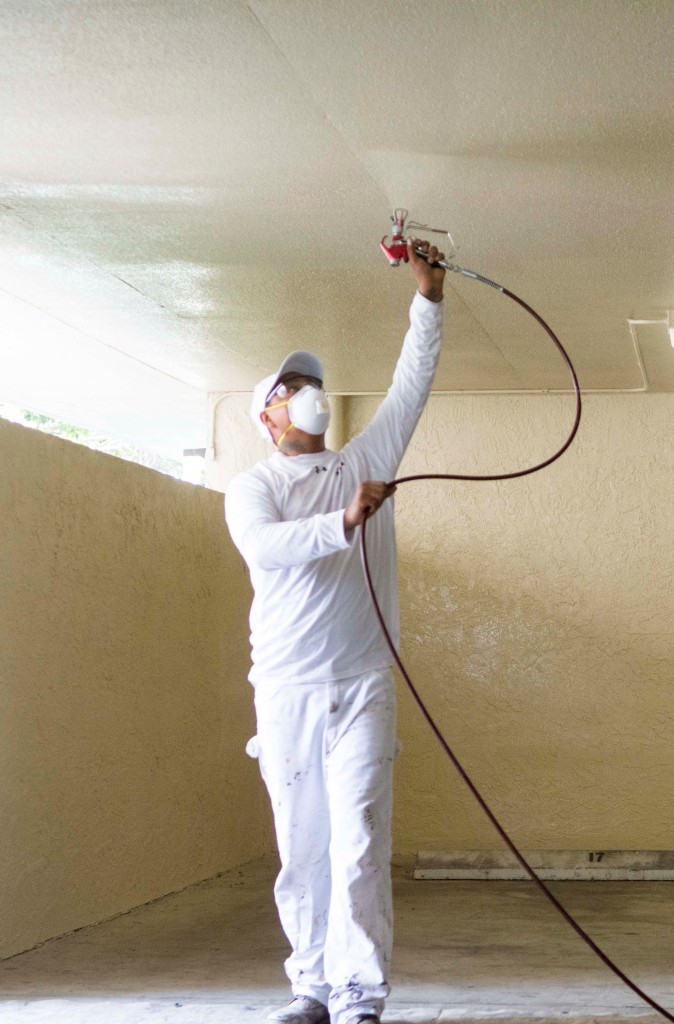Shopping for a Spray Gun? Things to Keep in Mind
 Chris Noto has been in the paint industry for more than two decades. In that time, he has found that when it comes to choosing the right spray gun, sometimes even professional painters aren’t sure of what to look for. The director of products for Wagner Group, which also owns commercial sprayer manufacturer Titan, recently gave some tips for what to keep in mind when researching the right spray gun for your needs.
Chris Noto has been in the paint industry for more than two decades. In that time, he has found that when it comes to choosing the right spray gun, sometimes even professional painters aren’t sure of what to look for. The director of products for Wagner Group, which also owns commercial sprayer manufacturer Titan, recently gave some tips for what to keep in mind when researching the right spray gun for your needs.
WHAT CATEGORY OF SPRAY GUN DO YOU NEED?
Noto likes to break down spray guns into several price categories, while also highlighting what you do and don’t get in each of them.
Inexpensive: Usually priced between $79 and $109, Noto says these guns tend to be made with a lot of plastic. Even though they lack bells and whistles, most are still durable. “These are suitable for a handyman or contractor who may be using a sprayer irregularly,” he added.
Not a workhorse category by any means, but some contractors like cheap disposable guns, particularly if they work in high-theft areas, Noto also noted.
Premium: Usually ranging in price from $130 to $180, these spray guns will often have components that can be rebuilt. They usually have a lighter trigger pull, ergonomic molded handles, and may include features like pail and belt hooks, too.
Industrial: Here’s where it gets tricky. This group may range in price from $200 to $600, or even higher. Aluminum is usually replaced by stainless steel, and larger porting and hoses are seen in this higher-price category units. But an industrial gun is built to accommodate thicker coatings, and if you are not regularly using thick coatings or lacquers on jobs, you may not need one.
THINK COMFORT
When buying a new spray gun, it’s important to consider several comfort factors.
Whip hoses: These 3‘– to 5‘-long hoses fit between the actual gun and airless hose to reduce fatigue by helping a user maneuver the gun with less restriction. It may or may not come with some guns.
Gun swivel: This one also reduces fatigue by allowing for a 360˚ rotation of the gun. Again, it may need to be bought as an accessory.
Trigger pull: More expensive guns will have a lighter trigger pull, but you may also have a two- or four-finger option. A two-finger trigger uses the inside muscle of the forearm, while the four-finger option uses the outside of the forearm, Noto explained. You might try someone else’s gun before buying. In the end, it comes down to preference.
ACCESSORIES TO CONSIDER
Most pros seek out certain accessories to get the job done right. Noto suggests the following three.
Reach tools: They range from 6″ to 6‘ and sometimes can eliminate the need for ladders or the need to reach over shrubs near windows. Noto himself always likes an 18″- to 24″-reach tool regardless of job size. “They help to keep the paint away from you, so you stay cleaner.”
Inner-feed rollers: A roller with perforations that has a constant flow of paint coming into it from the spray hose. It eliminates the hassle of constantly dipping and rolling, and brings better mill thickness, Noto said.
Spray-control devices: Traditionally, painters have used cardboard to catch overspray around windows, soffit and doors. But rolling metal spray shields like Spray Guide can actually attach to the spray guntip and give a clean edge every time.
For more information about gear, industry news, and other tips for the paint pro, visit inPAINTmag.com




